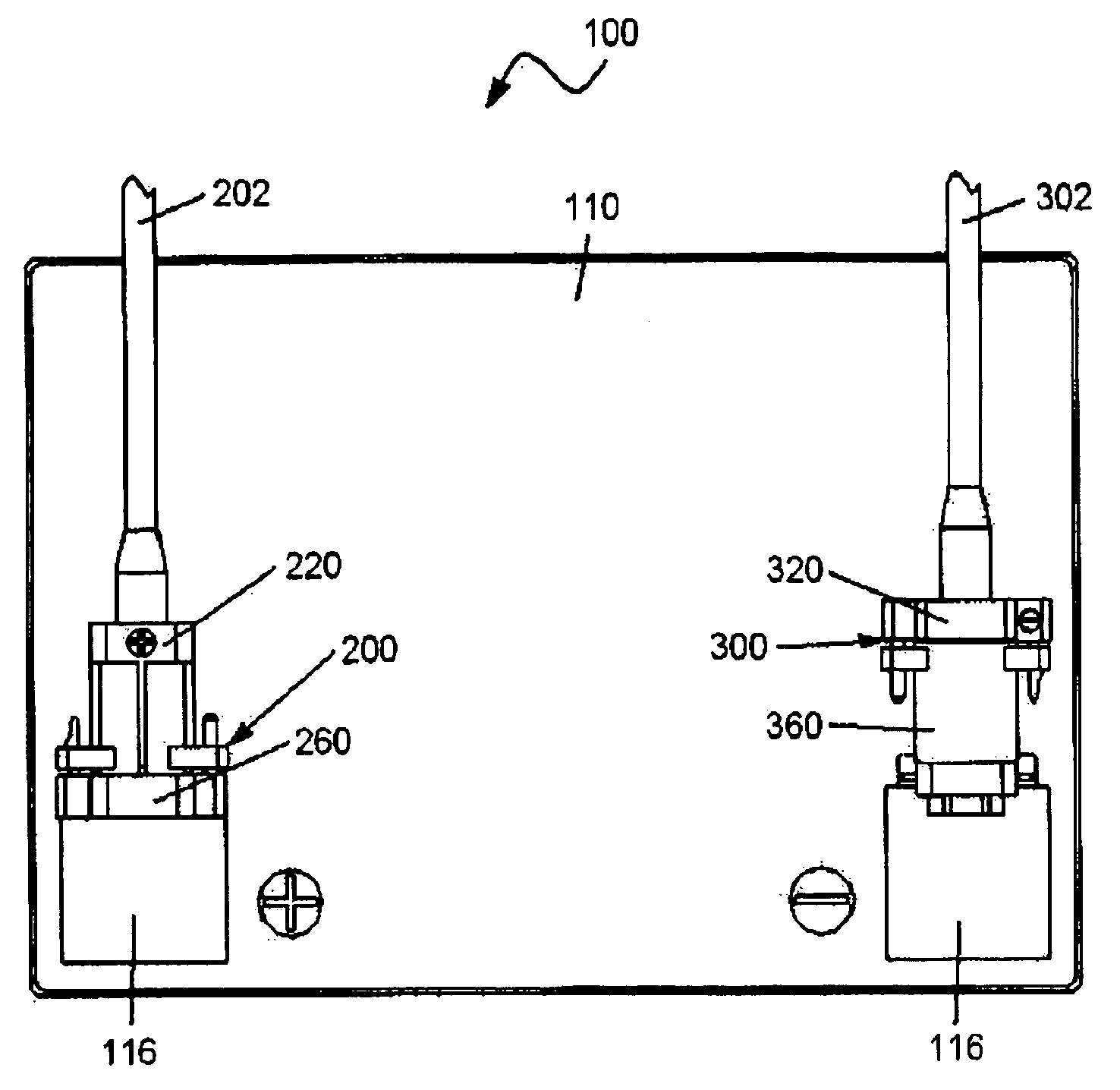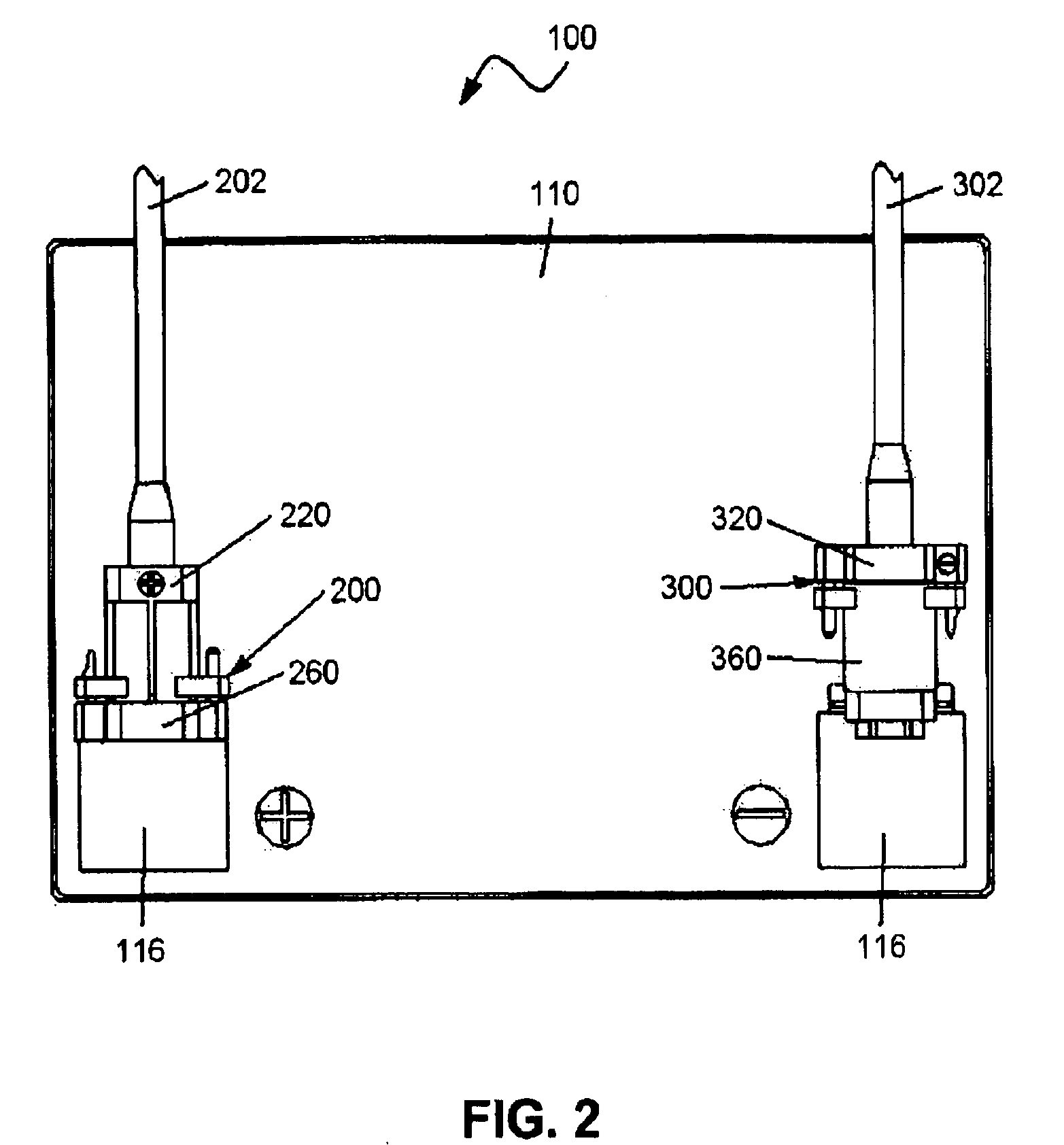Connector system for connecting cables to a battery
a technology of connecting cables and electrical devices, applied in the direction of coupling contact members, coupling device connections, securing/insulating coupling contact members, etc., can solve the problems of electrical shorts, electrical terminals, and terminals of conventional automobile batteries, so as to prevent electrical shorts and facilitate mating
- Summary
- Abstract
- Description
- Claims
- Application Information
AI Technical Summary
Benefits of technology
Problems solved by technology
Method used
Image
Examples
Embodiment Construction
[0023]Referring to FIGS. 1-11, a connection system 100 for connecting cables 202 and 302 to an electrical device 110, such as a battery, for example, in accordance with the present invention includes, at least, a first connector assembly 200 and a second connector assembly 300. The components of the first and second connector assemblies 200 and 300 are configured so that they are not interchangeable, that is, positive-polarity components are unmateable with negative-polarity components. Thus, the connector system 100 ensures that the cables 202 and 302 are connected to their proper respective terminal 112 or 114 of the device 110. Also, the components of the first and second connector assemblies 200 and 300 are configured to be easily mated or unmated by hand without the use of a tool. Once mated, the first and second connector assemblies 200 and 300 envelop their electrically conductive components; thus, the connector system 100 prevents electrical shorts from developing between te...
PUM
 Login to View More
Login to View More Abstract
Description
Claims
Application Information
 Login to View More
Login to View More - R&D Engineer
- R&D Manager
- IP Professional
- Industry Leading Data Capabilities
- Powerful AI technology
- Patent DNA Extraction
Browse by: Latest US Patents, China's latest patents, Technical Efficacy Thesaurus, Application Domain, Technology Topic, Popular Technical Reports.
© 2024 PatSnap. All rights reserved.Legal|Privacy policy|Modern Slavery Act Transparency Statement|Sitemap|About US| Contact US: help@patsnap.com










